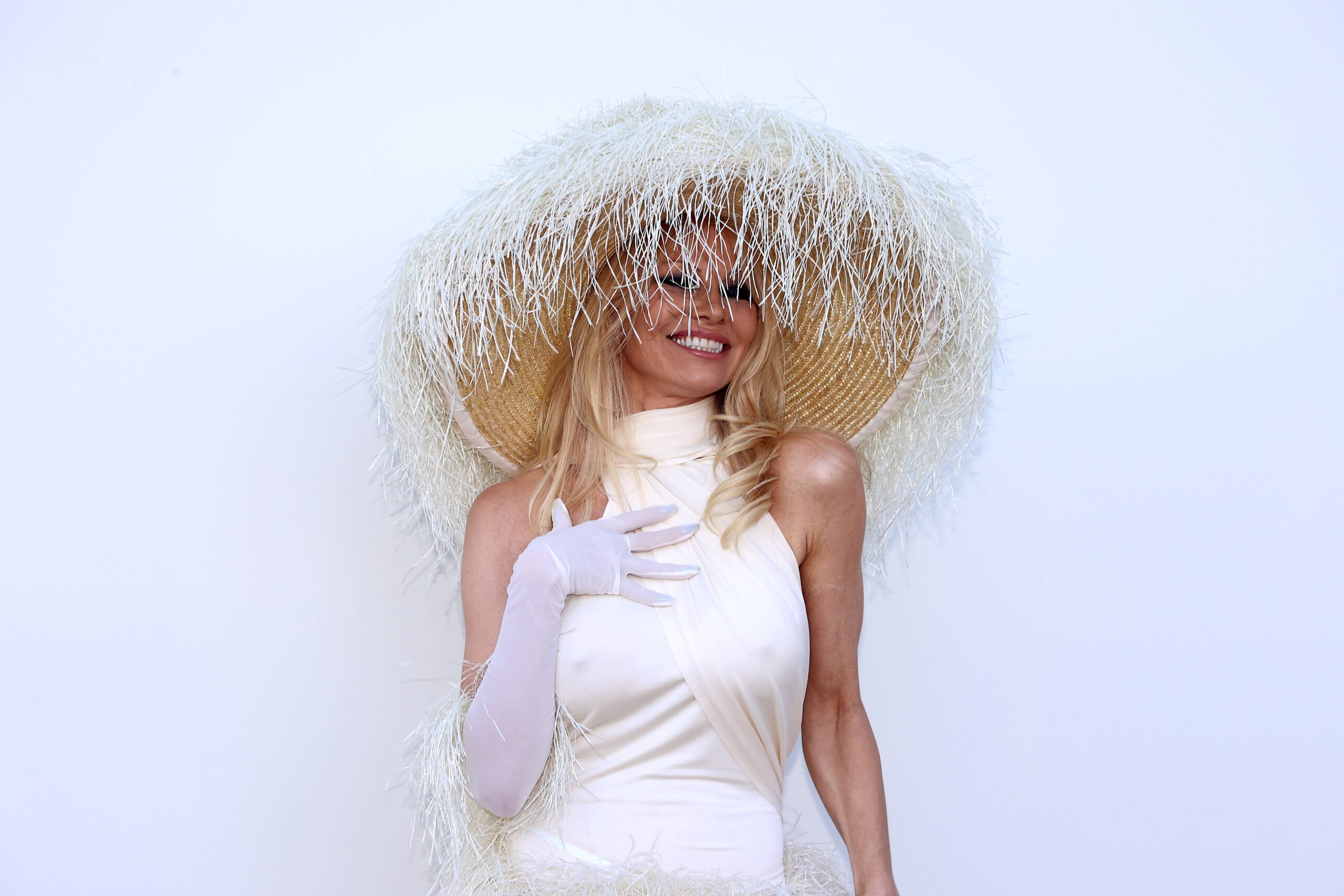CULTURE
Pamela Anderson Doesn’t Know What “Cultural Appropriation” Really Means—And Neither Do You
04 Nov, 19

Pamela Anderson
JP PARIENTESIPA (Shutterstock)
Early November is that beautiful time of year when Western society can collectively stop pretending pumpkins serve any purpose whatsoever and bask in all the tone-deaf Halloween costumes celebrities have donned.
While the most common offense by far is cultural appropriation, whereby an individual devalues cultures other than their own by treating it as a costume, the insult added to injury is often a confident selfie. Among this year’s worst offenders is Pamela Anderson, who posted two topless photos of herself with a Native American headdress.
Criticism fell into two camps: Wearing a headdress made of feathers was hypocritical of Anderson, a self-professed animal rights activist, and, oh yeah, it’s insane to still believe that donning a distinct cultural artifact of a culture other than your own for a costume is socially acceptable in 2019. When commenters quickly pointed out the insensitivity, Anderson doubled down on her costume choice with the following arguments: 1) Since she is an animal rights activist, that makes wearing a headdress made of feathers absolutely fine…somehow? And 2) cultural appropriation isn’t even a real problem, according to Anderson.
Tanya Tagaq, a Canadian Inuk throat singer, quickly responded to Anderson with “AND she’s against a seal hunt #racism.” Tagaq was referring to the long-standing conflict between animal activists and Canadian indigenous food traditions that infamously include seal-based dishes. Specifically, in Canada, Inuit communities are exempt from the country’s ban on seal hunting; in fact, “few people outside of the Arctic realize how crucial seals are to the Inuit economy and way of life,” CBC reports. The point touches on Anderson seeming to wear a headdress made of bird feathers while fighting for animal rights. Other commenters made similar critiques, from, “There isn’t a single thing you can say to this willful ignorance to make it understand. She’s a narcissist” to more reactive critiques like, “Whether you are native or not traditions need to CHANGE. Making animals suffer is horrible and they have the right to LIVE lady like YOU! It is shameful and disgusting NOT TO CARE.”
In response to Tagaq, Anderson wrote, “I am against the seal hunt. It’s barbaric and unsustainable…to beat baby seals – crush there [sic] skulls for a 2$ [sic] pelt that there is no market for. Makes no sense. There are other ways .. to stay true to tradition – saving the environment 🙏” As Tagaq pointed out, Anderson’s “cognitive dissonance” clearly prevented her from seeing the contrast between her self-righteous criticism of how Inuks “stay true to tradition” while reducing the value of a Native American headdress to an accessory in a Halloween selfie.
Anderson also linked a specious and willfully blind article titled “The Illogic of Cultural Appropriation,” in which the author argues that the fundamental idea behind cultural appropriation is wrong: “The worst aspect of cultural appropriation is that it is inconsistent with the cultural development and enrichment that a free society promotes,” the author who won’t be named or promoted here argues. “In a free society, people from different cultures bring their practices to the wider society and they are followed by others in that society, making possible a richer and improved culture.” While that’s true, the basic argument remains ridiculous, as well as willfully ignorant: “The basic idea [of cultural appropriation] is that the group or nationality or ethnicity who developed some practice should be the ones who are allowed to practice it.”
In actual fact, that’s not the definition of “cultural appropriation”—though, that misconception is widely shared not just by Anderson but by all of her defenders in her Twitter comments, as well as many conservatives, boomers, and misguided youths with boomer mentality. Before 2013, “cultural appropriation” was mostly a term used in academia to describe “the act of adopting elements of an outside, often minority culture, including knowledge, practices, and symbols, without understanding or respecting the original culture and context.” As expanded in The Concise Oxford Companion to English Literature, “It is in general used to describe Western appropriations of non‐Western or non‐white forms, and carries connotations of exploitation and dominance.”
“Exploitation and dominance”—like colonialism, genocide, and enslavement—are the roots of cultural appropriation. That’s why it’s offensive, wrong, and, yes, even “triggering.” It’s not the simple act of following a tradition that is outside of your own culture; it is misappropriating another culture “without understanding or respecting the original culture and context.” So, for utter clarity, wearing a headdress for Halloween is ridiculous and insensitive by the simple fact that donning a costume is an act of careless play and not meant to honor any peoples or traditions. So is dressing up as Cleopatra, a Geisha, or a sugar skull for Dias de los Muertos. Stop it. Pamela Anderson stopped being remotely cool when she starred in 2003’s Stripperella. Don’t be like Stripperella.
- Pamela Anderson raises ire with headdress Halloween tweet | CBC … ›
- Pamela Anderson under fire after wearing Indigenous headdress on … ›
- Pamela Anderson’s Native American Halloween costume gets her … ›
- Pamela Anderson’s Native American Halloween costume gets her … ›
- Pamela Anderson draws condemnation with Indigenous headdress … ›
- Pamela Anderson’s Native American Halloween costume gets her … ›













